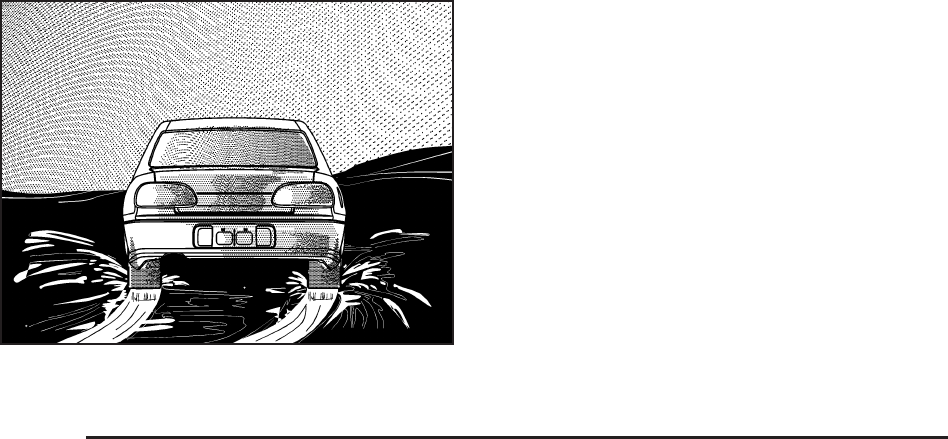
Driving on Snow or Ice
Most of the time, those places where the tires
meet the road probably have good traction.
However, if there is snow or ice between the tires
and the road, you can have a very slippery
situation. You have a lot less traction, or grip, and
need to be very careful.
What is the worst time for this? Wet ice. Very cold
snow or ice can be slick and hard to drive on.
But wet ice can be even more trouble because it
can offer the least traction of all. You can get
wet ice when it is about freezing, 32°F (0°C), and
freezing rain begins to fall. Try to avoid driving
on wet ice until salt and sand crews can get there.
Whatever the condition — smooth ice, packed,
blowing, or loose snow — drive with caution.
If you have the Traction Control System (TCS), it
will improve your ability to accelerate when
driving on a slippery road. But you can turn the
TCS off if you ever need to. You should turn
the TCS off if your vehicle ever gets stuck in sand,
mud, ice, or snow. See If Your Vehicle is Stuck
in Sand, Mud, Ice, or Snow on page 241. Even if
you have TCS, slow down and adjust your
driving to the road conditions. Under certain
conditions, you might want to turn the TCS off,
such as when driving through deep snow
and loose gravel, to help maintain vehicle motion
at lower speeds. See Traction Control System
(TCS) on page 217 and Electronic Stability Control
on page 219.
238


















